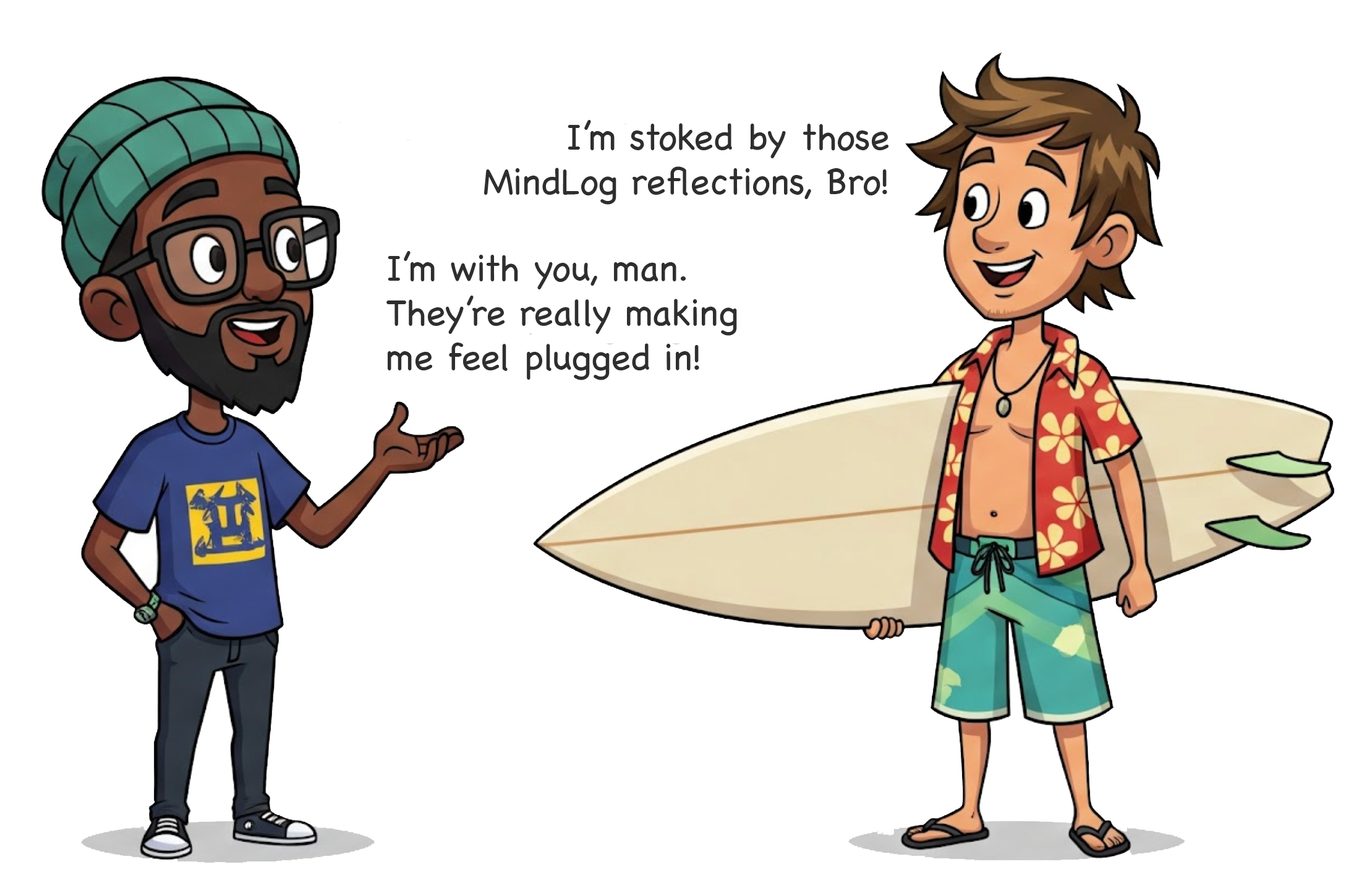How to write MindLog reflections
Please send us your reflections on MindLog reflections.
We'll use them to further develop the information on this page.
Basic guidelines
MindLog is designed to help you connect what you already understand, feel, know, or can do with ongoing input from your environment (conditions, relationships, events, information, your own body/mind, etc). The following practices will help you get the most out of MindLog.

Do your own thinking and writing: MindLog is designed to support and allow you to watch the development of your mind and your own unique voice. If you use outside sources or AI (including grammar checkers), MindLog won't provide these benefits.
Your “voice” is the particular way you present your personality, way of thinking, and style in your writing.
Frame: Try to put what you’re trying to achieve into words. Are you...
- coming to terms with new information,
- enjoying a good whine,
- examining actions or their impacts,
- working toward a decision,
- teetering on the brink of a new level of understanding,
- trying to organize your thoughts,
- consciously building a skill,
- revisiting a past experience through a new lens,
- confronting a moral dilemma,
- grappling with challenged beliefs,
- attempting to resolve a conflict,
- working on character development for a new novel,
- fulfilling an assignment
- etc.
Whatever it is that you're hoping to get out of a MindLog entry, you're more likely to get what you're aiming for if you're clear about your intentions.
Explain & analyze: Each time you make an entry, try practicing at least one of the skills in the following list.
- examine points of conflict or confusion,
- identify challenges,
- shift your perspective (self, other, us, others),
- try to identify your own assumptions,
- notice how assumptions affect conclusions,
- look for flaws in your logic,
- look for gaps in your knowledge,
- lay out alternatives,
- compare perspectives,
- reframe (look at things from multiple angles—particular situation, location, time, social position, etc),
- etc.
At first, practicing these skills may seem laborious, but keep at it and they will become second nature to you.
Explore: Try on different ways of looking at things without worrying about success or failure. Playfully…
- make experimental mental connections,
- look at things from different angles,
- dream up a range of scenarios,
- watch how your mind changes as new connections get made,
- notice how each topic you write about makes you feel.
- write like you're somebody else—a friend, family member, acquaintance, hero, villan, etc.
Set reasonable goals: Don’t aim for resolution, completion, deep insight, or transformation.
Steer clear of perfection: Write as clearly as you can and always use a spell checker. Otherwise, try to avoid the temptation to aim for correctness or perfection of any kind.
Keep it short: If you are using the Reflections version of MindLog, stop writing after 15 to 20 minutes. The rewards of Mindlogging are incremental and cumulative. Writing more won’t get you there faster.
Important note: If you are responding to prompts set by another party as part of a course or other learning experience, make sure you understand what they would like to see in your reflections.